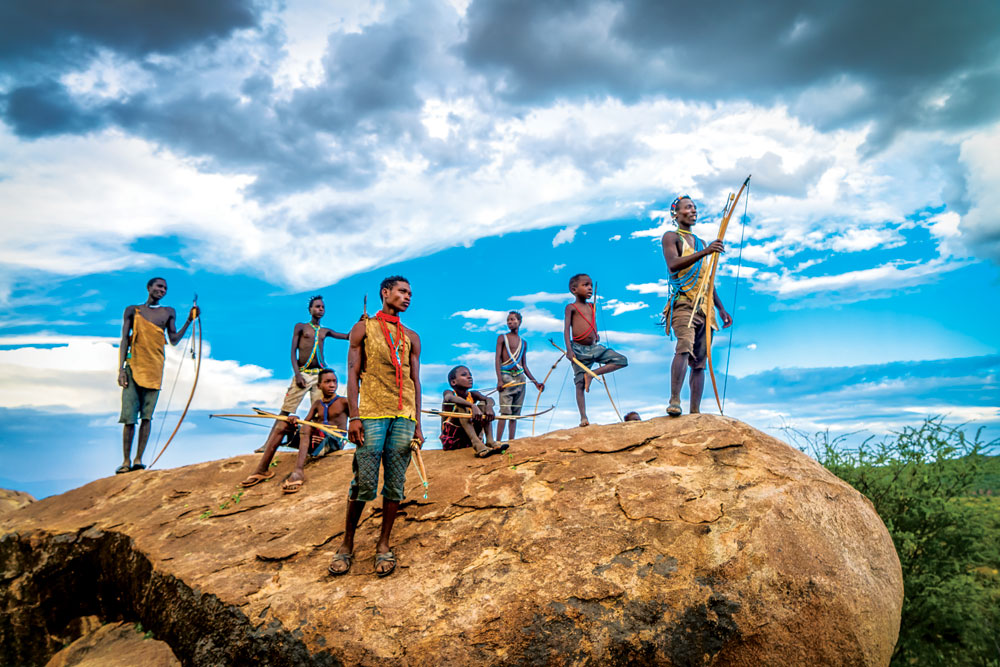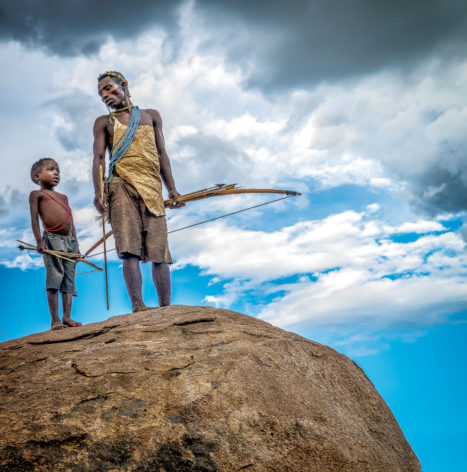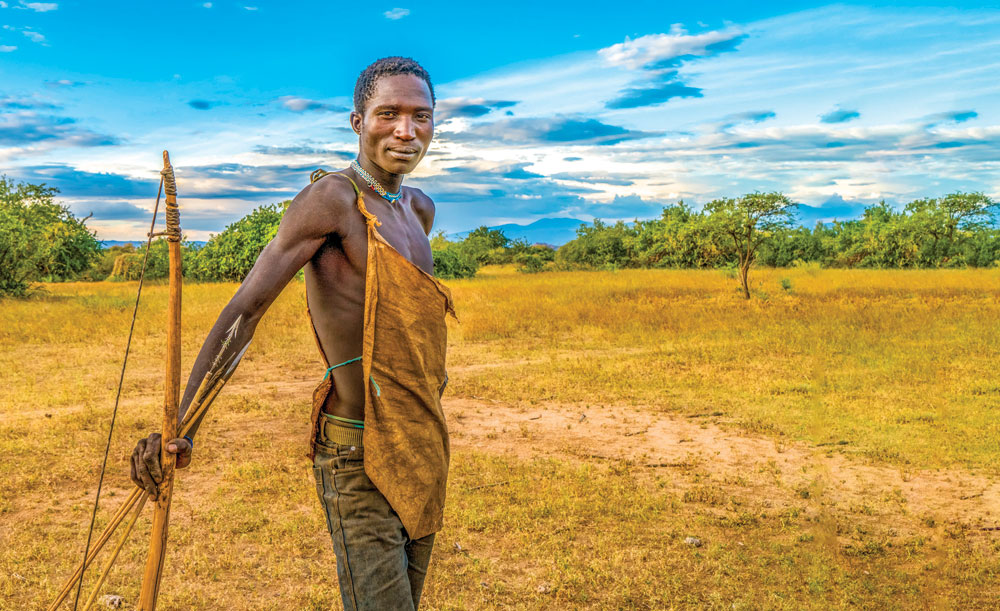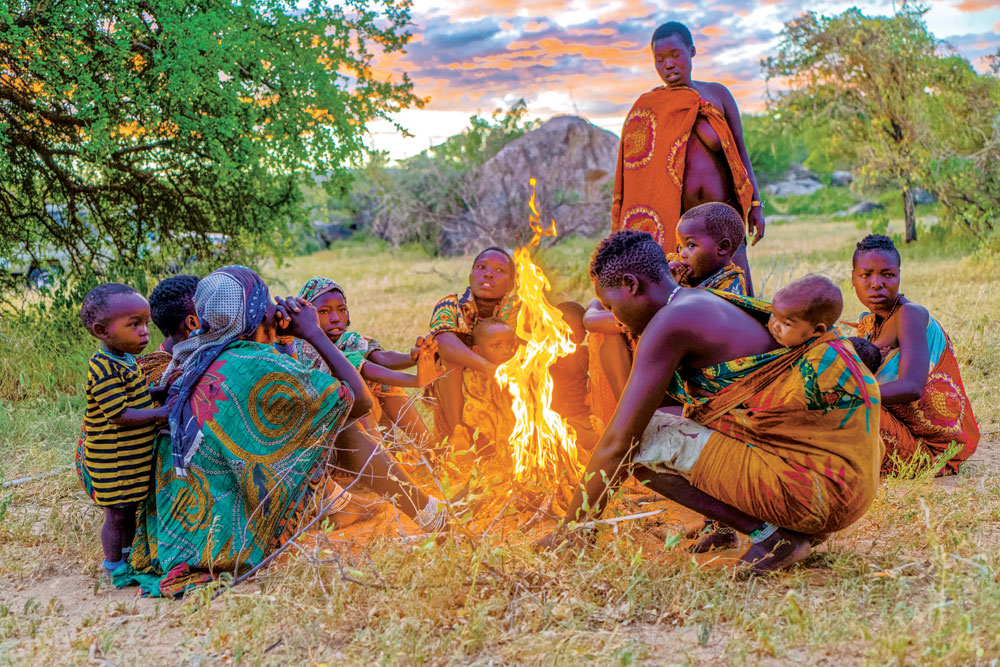
Hadza hunters gather before a storm.
They have no written language, no modern healthcare, no money, few possessions—and they see us as “lost” because of our overstimulation, distractions and isolation.
Mike Holtby determined years ago he wanted to center his life on “great adventures,” as he calls them. Rather than acquire “stuff,” Holtby collects experiences, inspired in part by his years as a psychotherapist working with a predominantly gay male population caught in the throes of the AIDS epidemic. The tenuous nature of his patients’ lives, as they confronted what was at the time a death sentence, continues to serve as a potent inspiration to Holtby. A deep love of life and the many ways people choose to live informs his photographs of the Hadza (or Hadzabe), nomadic hunter-gatherers who live in northwest Tanzania.

As a part of the Denver-wide Month of Photography in March, Mike Holtby gives a presentation on visual story-telling with photos from his February trip photographing the Hadzabe hunter-gatherer tribe in Tanzania.
“We don’t want to change our way of life…we think you’re lost,” says Holtby, paraphrasing the view of modern society that the Hadza shared with him, through an interpreter. This communal and egalitarian society, Holtby says, does not value private property, and does not want modern technology or even farming to interfere with their values and traditions. As an example, Holtby shares a photo with colorful beaded jewelry hanging from a tree limb. Whoever wishes to adorn themselves can wear it, according to Holtby. He recalls seeing the same dress on different women over the course of his visit with the tribe, an acknowledgment of the few possessions tribal members have, and the communal nature of their society.

Shakwa, the camp’s leader, with his son.
Holtby and two other photographers were invited to join Amsterdam’s Jimmy Nelson Foundation on this photographic journey that gave them rare access to the Hadza people in Tanzania this past February. The Foundation’s mission is to create a visual record of ethnic minorities around the globe. Reminiscent of Edward Curtis’ early twentieth-century work documenting Native American populations in the U.S., the Foundation funds photographic expeditions to “promote positive visibility and appreciation for indigenous cultures.”

N’Oye with his ever-present bow and arrows.
Holtby, a Stapleton resident, counts himself among Curtis’ admirers, even dedicating a page on his website to Curtis. Unlike Curtis, though, he avoids formal portraits and prefers to take candid photos, even while recognizing the inherent tension outsiders with cameras introduce, especially in a community that rejects modernity. “I really value the connection to people,” he says, though he does his best to be unobtrusive. In some of his images, Hadza children take photos of each other with bright blue Nikon (a trip sponsor) cameras, suggesting their engagement with the process of capturing their own likenesses.

The Hadzabe women’s fire at dawn.
The Hadza tribe numbers between 1,300-1,500 according to the NGO Minority Rights Group International (MRG). They live near Lake Eyasi along the Rift Valley and were long regarded as backwards and needing assimilation—first by the British colonial authorities and after independence by the Tanzanian government. In 2011, however, bowing to activists’ pressure, the Tanzanian government issued the tribe communal titles to some lands, according to MRG.
Holtby hopes the photographs will increase appreciation for Hadza culture and by raising international awareness, perhaps help protect them from further land loss by neighboring pastoral groups.
As in many traditional cultures, gender roles are clear. Women and girls gather water, forage for food, and build huts; the women also determine when it’s time to move. Men and boys hunt with the bows and arrows they make, relying on game like baboons and impalas, according to Holtby. In reality, though, the majority of the diet is plant-based, with berries, tubers and other edible plants, along with honey, forming the basis of their diet, according to anthropologist Frank Marlowe, PhD. “When neighboring tribes have suffered from famine, the Hadza have endured, because they know where to find food,” says Holtby.
Holtby says the Hadza move about six times a year, their relocation dictated by the need for water and berries and other staple foods. Ironically, tourism may in part be what sustains foraging practices for some Hadza, according to Marlowe’s research. He writes, “In reality, at least during the dry season when tourist travel is possible, some Hadza receive enough money from the tourists that they can buy maize to live on, and only forage when the tourists show up and want to go on a walkabout.”
“I came to really respect them,” Holtby says. “They have such a great sense of community….They don’t value possessions. They value relationships.” The same could be said of Holtby, as suggested by his photographic work. It spans the globe and reminds one of our common humanity, no matter the dress, faith, or lifestyle. Even the title of his ongoing project, “One Planet, One People,” captures this vision. Holtby’s travels have taken him to 44 countries, and he’s not finished yet. This summer, he will visit Canada, Uganda and Switzerland in pursuit of more great adventures.
To learn more about Holtby’s trip to Tanzania, visit: https://jimmynelsonfoundation.com/projects/the-hadzabe/ and Holtby’s blog at http://www.hadzabe.org.
Holtby welcomes opportunities to talk to educational groups about the Hadzabe culture. Contact him at holtby@denverphotography.com. View Holtby’s photography at: https://www.denverphotography.com.
All photos by Mike Holtby.


0 Comments